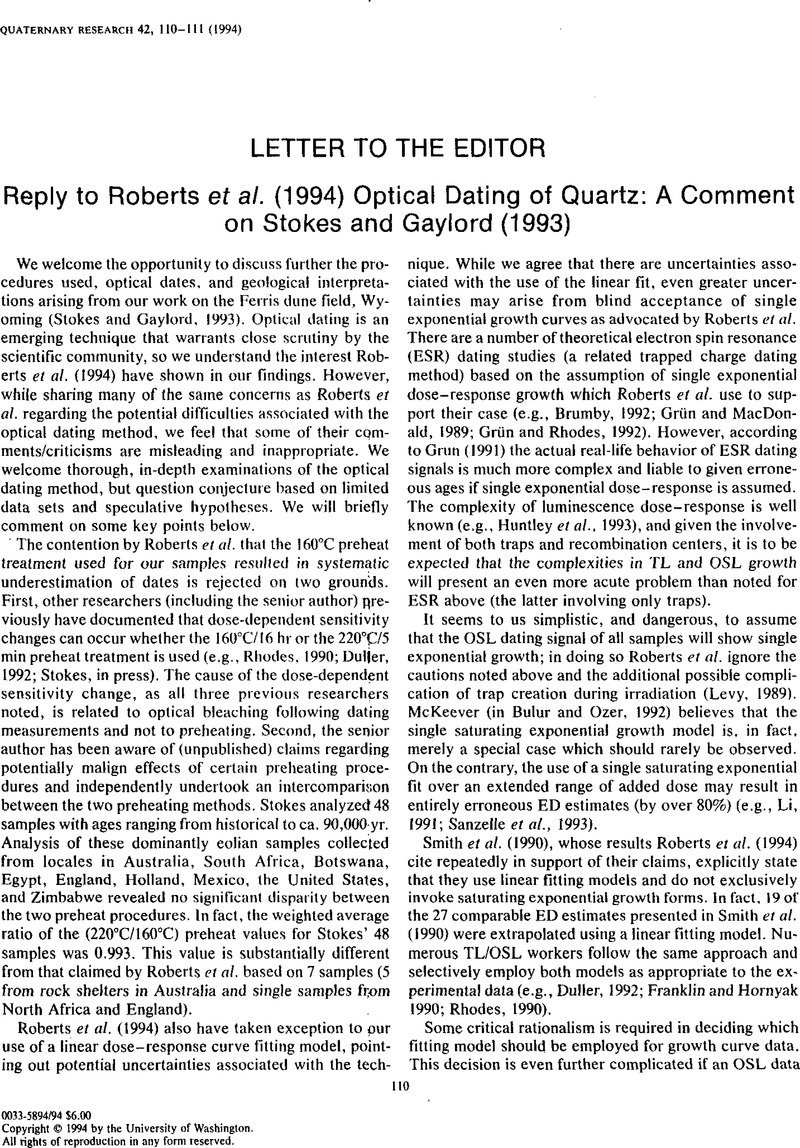Crossref Citations
This article has been cited by the following publications. This list is generated based on data provided by Crossref.
Mahaney, William C.
1995.
Dating methods: review for 1994.
Progress in Physical Geography: Earth and Environment,
Vol. 19,
Issue. 3,
p.
399.
Grün, Rainer
1996.
Errors in dose assessment introduced by the use of the “linear part” of a saturating dose response curve.
Radiation Measurements,
Vol. 26,
Issue. 2,
p.
297.



